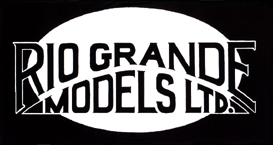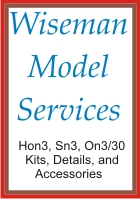

California & Nevada Railroad.
by John Hall
The California and Nevada Railroad was incorporated March 25, 1881. Its purpose was “to construct a narrow gauge railroad from a point at or near San Francisco through the southern portion of Alameda County to the town of Modesto; thence northeasterly through Stanislaus county to a point at or near Sonora and Columbia, in Tuolumne county; thence to a point at or near the Calaveras Big Trees, in Calaveras county; thence through Alpine County to a point at or near Bridgeport, in Mono county; thence to the state line at a point at or near the Dexter Wells.” The original Directors were from San Francisco, Columbia, and Nevada. The plan was to connect with a westward extension of the Denver and Rio Grande.
The vision was grand but the pocketbook was poor. Initially incorporated with stock valued at $2,500,000, the company quickly increased its capital stock to $6,250,000. However, only approximately $250,000 of the stock was subscribed.
The construction contract was awarded to Meyers and Mowry for the first 100 miles. Initially things started out well with 12.5 miles of right-of-way graded by December 1881. However not all the property owners were willing to sell their land for right-of-way. In addition, the Central/Southern Pacific was doing all it could to discourage the railroad, including spiriting away one of its most ardent directors Charles H. Livingston of Columbia. Other major stockholders sold their stock for unknown reasons. In early January 1882 construction was suspended.
In February 1882 a new board of directors including some of the original minor stockholders decided to issue bonds in hopes of generating construction funds. No one wanted to buy stock. A $5,000,000 mortgage was recorded for 5000 $100 bonds at 6 percent backed by all the current and future land, right-of-way, track, rolling stock, stations, and shops purchased by the railroad. The problem was that there was no revenue to pay the interest on the bonds. Creative financing at its best.
Charles H. Gorrill of the Pacific Bridge Company was hired as a sub-contractor for 44 miles of track. The company graded up San Pablo Creek in places where the right-of-way had been secured to the site of the Charles Hill Tunnel between Orinda and Lafayette. Tunnel construction began in February and continued until a cave-in in April 1882. Construction came to a halt due to difficulties obtaining the right-of-way, lack of supplies, and the tunnel cave-in.
J. S. Emery, then President of the railroad, requested a one year extension of the railroad franchise giving time for condemnation lawsuits to obtain the right-of-way. Unpaid sub-contractor Charles H. Gorrill ceased work.
Almost two years later, in February 1884 construction began again with a new General Contractor, Captain J. W. Smith. Captain Smith agreed to construct the railroad using his own money; being paid with railroad bonds. So begins the longest construction period in the life of the railroad; seven years to build 20 miles of track.
Work begins on the wharf at Emery's (Emeryville). By June 1884, 160 feet of wharf had been constructed and six miles of track had been laid. In August the first locomotive arrived from H. K. Porter. Six freight cars had been built in the company shops and work had begun on a passenger car. The infusion of capital from Captain Smith was off to a good start. On March 28, 1885 the first train pulled into San Pablo, 10.5 miles from Emery.
In April 1885 the Board of Directors held its annual meeting. Of note is the appointment of Calvin Pratt as Chief Engineer. Mr. Pratt was probably one of many employees who were infrequently paid. In November 1885 he took the opportunity of embezzling $14,000 and fled to Japan. Once found and brought back he was found guilty in December 1886.
During this time there were few reports in the papers about the California and Nevada Railroad. The railroad began Sunday excursion service which was its major revenue source; but not enough to offset operating costs. The excursion service was operated during the spring and summer months. In February construction resumed east of San Pablo reaching Olinda (not to be confused with Orinda) in September 1887.
The California and Nevada Railroad generated a lot of rumors in the press. There were numerous reports that some railroad was about to buy it out. In November 1887 that speculation became serious regarding the possible sale to the Atchison, Topeka, and Santa Fe Railroad. This speculation would continue 15 more years until the AT&SF finally purchased the railroad.
By 1888 regular passenger trains were not running. In March a real estate syndicate leased the railroad and operated one train to San Pablo. This provided transportation past the Peralta Park real estate development in Berkeley. The developer hoped the railroad service would help sell the lots.
In March 1889 Captain Smith removed the track from the short wharf at Emerys and instead installed an interchange track with the Northern Railroad(SP). J. S. Emery sold the railroad the land for the interchange. The crossing of the California and Nevada Railroad and the Northern Railroad was removed.
In June construction began up San Pablo Creek. By July 1889 the railroad had been extended 2.5 miles. In September a new sub-contractor was on board. The Grant Bros., who built much of the AT&SF, continued construction in the San Pablo Creek area. This stimulated speculation in the press that the AT&SF was buying the C&N. A year later, in June, there was a report that the Charles Hill tunnel would built right away. By July the railroad had reached Garcias where a water tank and pump were constructed. By the end of the month the railroad reached Orinda Park (also not to be confused with Orinda). On October 3, 1890 there was an announcement that trains would run Thursdays and Sundays from Emery's to Orinda Park.
During this time Captain Smith and others incorporated the Pacific Construction and Improvement Company with a very broad goal of doing everything with the main purpose of operating a ferry service between San Francisco and Emery's. By the end of October 1890 Captain Smith's son, a Denver street car magnet, told his father that he saw no profit in operating the ferry system and the scheme languishes.
In December 1890 the newspapers reported that Captain Smith had sold the California and Nevada Railroad. While Captain Smith was the major bondholder he did not own the C&N. What he sold was his C&N construction contract to A. A. Grant and J. A. Williamson who had purchased the Moraga Ranch with hopes of developing it. As before, the railroad construction would be paid with bonds.
By April 1891 trains were running regularly and track was constructed to De Laveaga, a county home of a San Francisco businessman. By November 1891 tracks had reached Bryant's (Orinda) bypassing the old alignment to Charles Hill and Lafayette in favor of a new alignment into the Moraga Ranch.
In January 1893 it was announced that the track would be extended to Moraga and grading began. The grading was almost completed by late February.
In May of 1893 the annual meeting of the Board of directors of the C&N had two new members, Alton. H. Clough and William Thomas. Both were associates of F. M. Smith the Borax King and originator of what was to become the Key System. Mr. Smith was interested in a ferry terminal for his street car system.
Trains continued to operate on an uneven schedule. Maintenance of the track and rolling stock had been deferred and reports of passenger cars overturning, children killed, cows killed and near accidents became frequent in the press.
In November 1895 Captain Smith died and the stockholders sold out to F. M . Smith. These events start off seven years of litigation to determine who actually owned the C&N. Was it the stockholders or the bond holders? Were all the bonds acquired legitimately? Were all the heirs of Captain Smith being treated fairly? How did the bond issuer, the Central Trust Company of New York, fit in to the picture?
While all the lawsuits were going on the courts put the railroad into receivership and appointed a receiver, C. K. King, to deal with the day to day operations of the railroad. There were also lawsuits about who should be the receiver? Mr. King was removed and A. A. Grant became the receiver. Then Mr. Grant died in July 1901. Trains stopped running and the railroad was idle. Finally in January 1902 the last receiver Mr. Burton wanted to tour the line and found that while the railroad had been idle: one locomotive had been stolen; the other stripped for parts; while the rolling stock sank and decayed in the marsh of San Francisco Bay. The Carter Bros. built handcar was available for his tour.
In November 1902 the AT&SF bought the C&N under foreclosure by the Central Trust Company of New York for nonpayment of interest on the bonds. F. M. Smith and the Realty Syndicate along with the AT&SF then proceeded to construct a long wharf and ferry service to San Francisco Bay finally fulfilling the dream of the C&N to connect to the City. The AT&SF rebuilt the track to standard gauge from Emery's to what is today Blake Street in El Cerrito where it connected to the AT&SF. The remainder of the line was abandoned. Today the San Francisco BART system uses the original right-of-way between Cedar Street in Berkeley and Blake Street in El Cerrito.
Hilton, George W. (1990). American Narrow Gauge Railroads. Stanford: Stanford University Press. ISBN 0-8047-2369-9.
Hanson, Erle C., California and Nevada Railroad, Third Edition, 1994
Poor’s Manual of Railroads, 1882, 1884-1887, 1889, 1891-1903
13th Annual report of the California Board of Railroad Commissioners, September 15, 1892
Travelers Official Guide of the Railway and Steam Navigation Lines in the United States, Canada and Mexico, November 1897 Various issues of the following newspapers (available online at: CDNC)
Daily Alta California, November 1875 to April 1891
Livermore Herald, September 1881 to June 1885
Los Angeles Herald, October 1881 to December 1885
New York Times, June 1896
Pacific Rural Press, June 1884 to March 1891
Sacramento Daily Record-Union, April 1873 to March 1891
San Francisco Call, April 1890 to November 1902
Saucelito News, March 1899
Reference Data Available Online:
Maps.
The Route of the California & Nevada Railroad for Google Earth.
by John Hall.
Map of Oakland, Berkeley, and Alameda, 1884.
1895 San Francisco USGS Topographic Quadrangle.
1897 Concord USGS Topographic Quadrangle.
Photographs.
Collected California & Nevada Photographs.
Images collected from private collections, libraries and historical societies.



